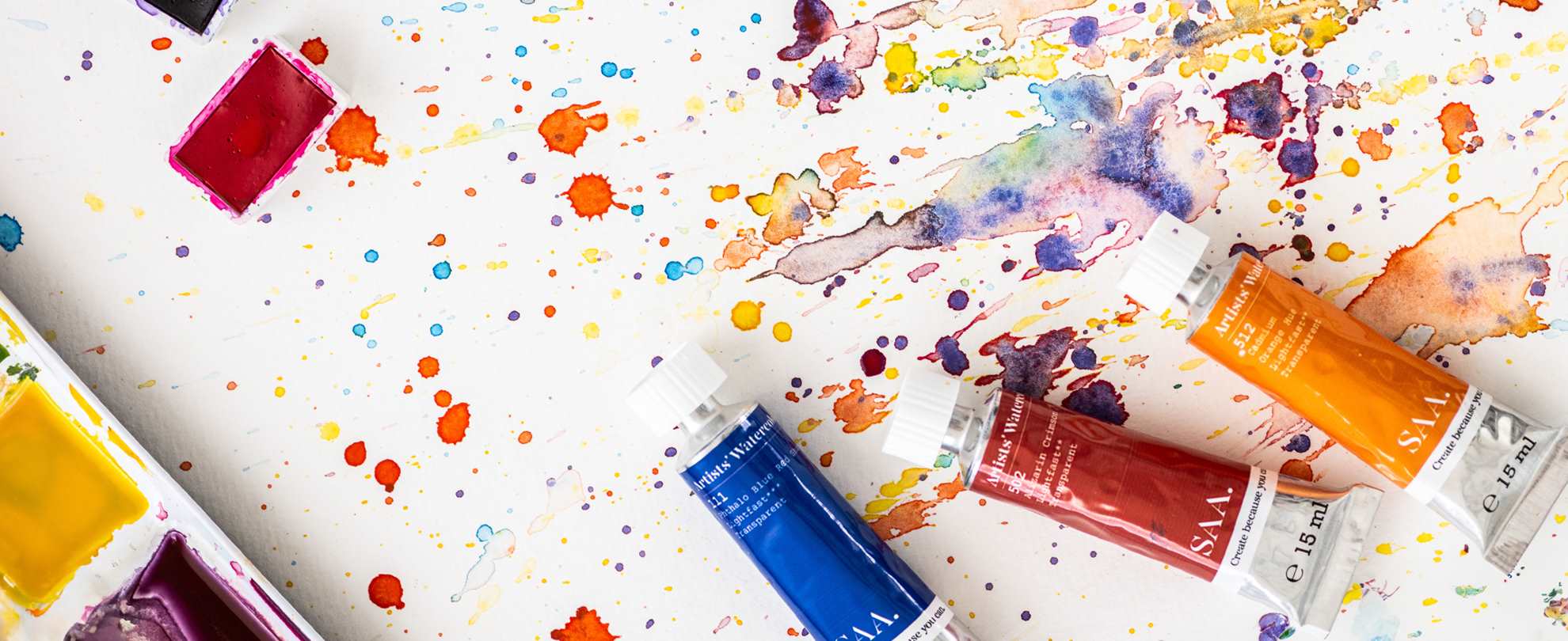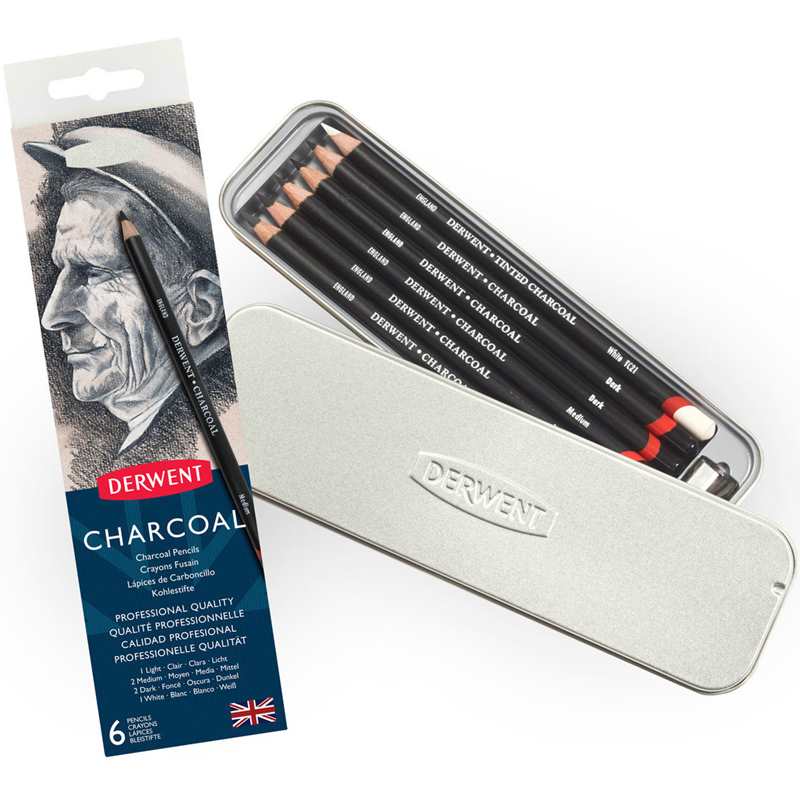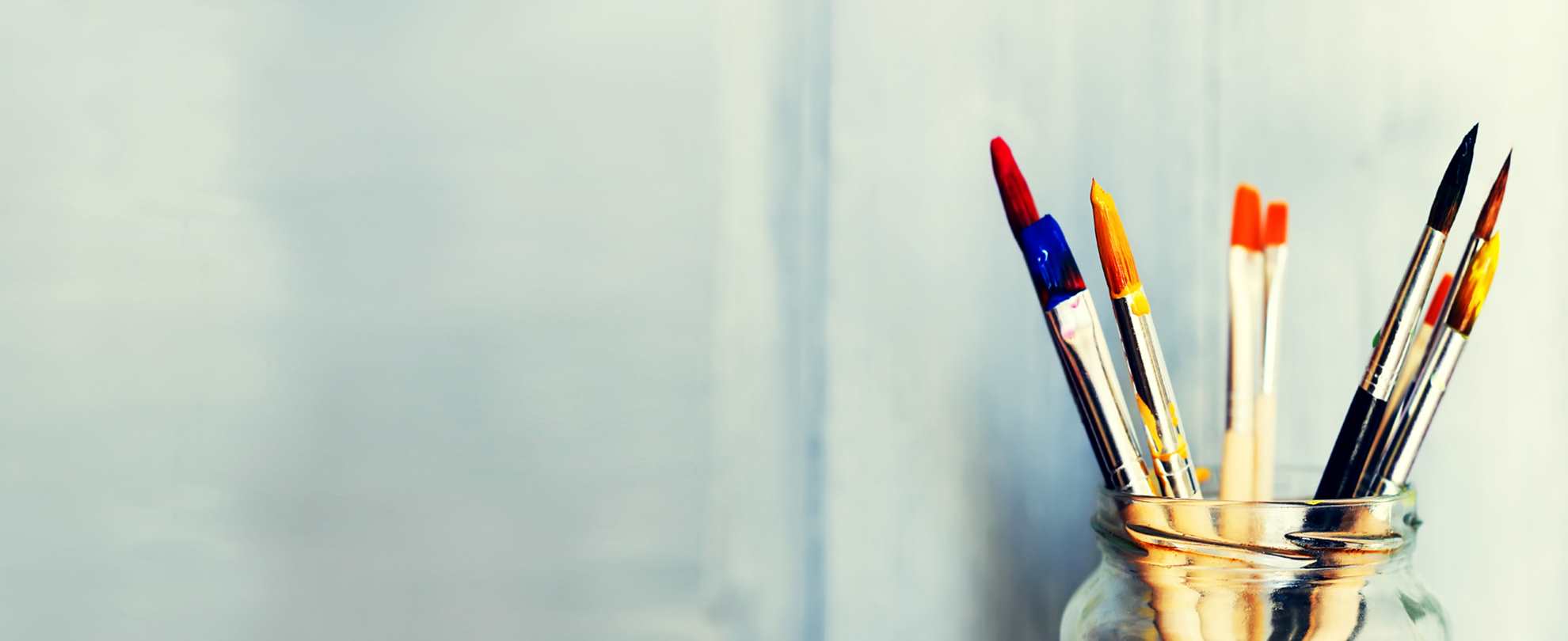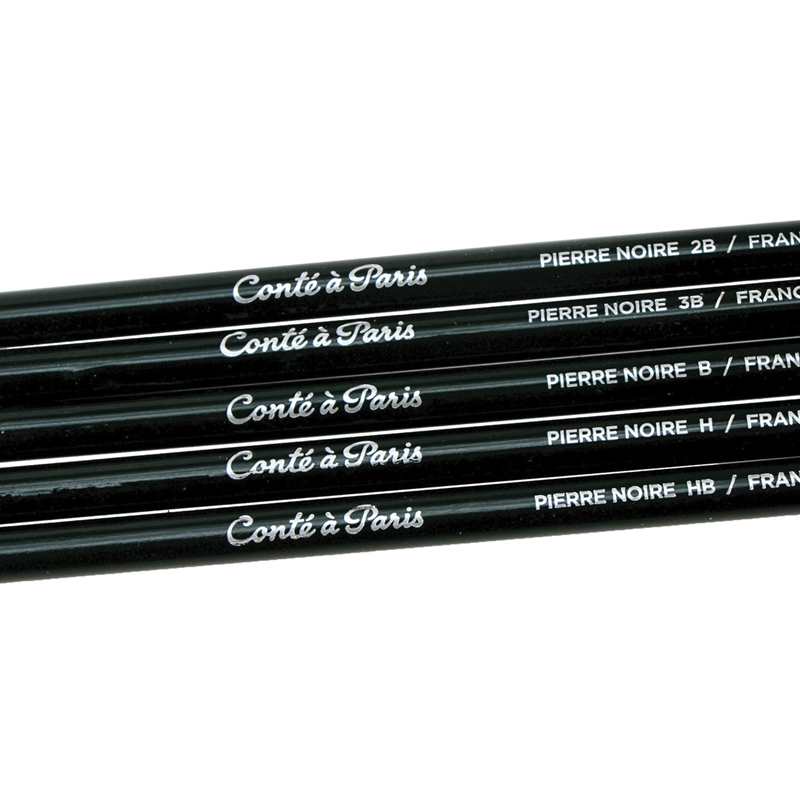

Types of Charcoal
Charcoal gives rich black lines and is perfect for blending, lifting, smudging, and contrasts between light and dark but is often a messy medium and smears easily. This makes it popular with artists, but charcoal has many other uses from using as fuel, medicine, filters and purification. The earliest drawing in charcoal date back 28,000 years when painting in caves in Africa show a form of charcoal being used. There are various methods and materials used in making charcoal.
The most popular forms for use by artists are:
Willow charcoal is made from Willow branches which is a fast growing plant, and it takes 3 days to turn the raw willow into charcoal as it is slowly burnt to varying degrees of hardness to produce a material ready for the artists to use.
Vine Charcoal is made using grape vines burnt in kilns without air. they produce long thin sticks and thin pieces of charcoal stick that is the result of burning sticks or vines in a kiln without air. They contain no binding agent.
Compressed charcoal is made from charred wood dust held together with a binder of gum of wax which can affect the hardness of the charcoal, making it harder than willow or vine charcoal. These are formed into blocks or a form of stick.
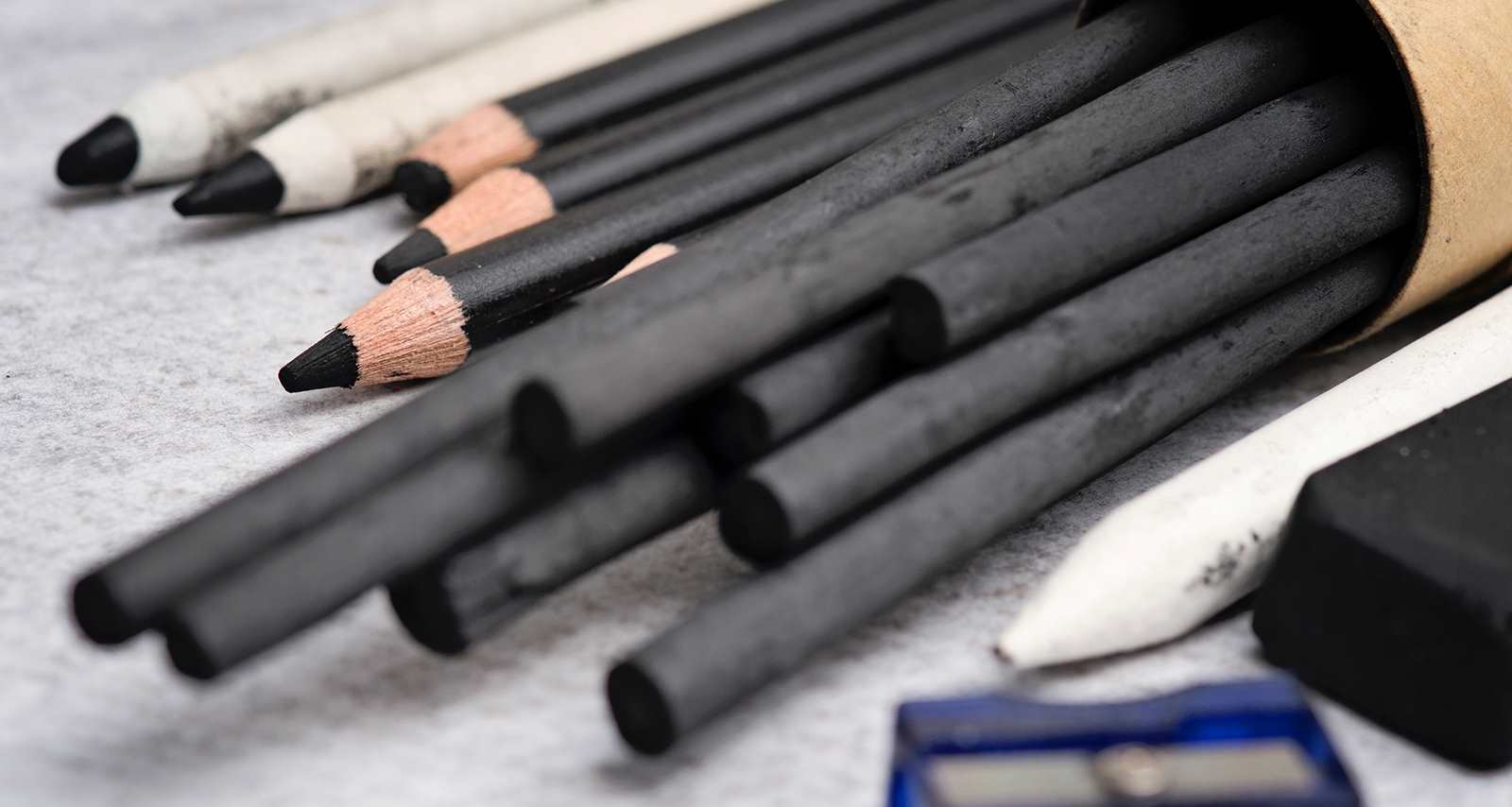

Charcoal Pencils
Charcoal pencils are wooden pencils that contain a strip of charcoal graded the same as charcoal, for the traditional effect of charcoal with a little more control (and a little less mess), Natural charcoal particles are mixed with the finest clays to produce a rich, smoothly textured pencil with all the beauty and character of traditional charcoal in a convenient, easy to use form. Charcoal Pencils are available in light, medium and dark grades that can be blended together to create powerful and imaginative charcoal drawings.
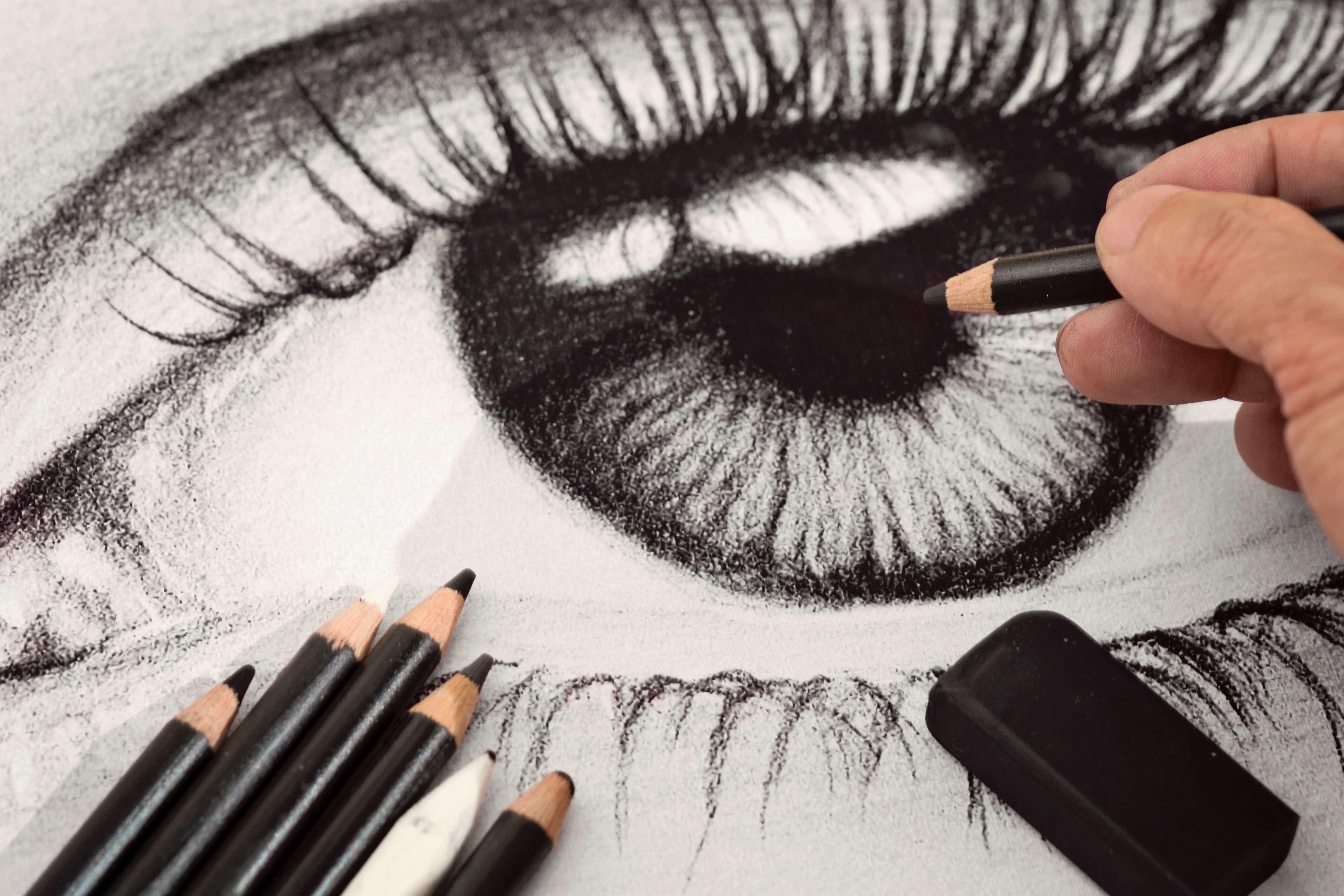

Liquid Charcoal
Liquid charcoal is finely ground charcoal powder added to a binder of Gum Arabic to create an exciting rich black wet medium similar to a watercolour. It can be diluted with water and used with a brush for tonal layering, precise details or expressive energetic marks.
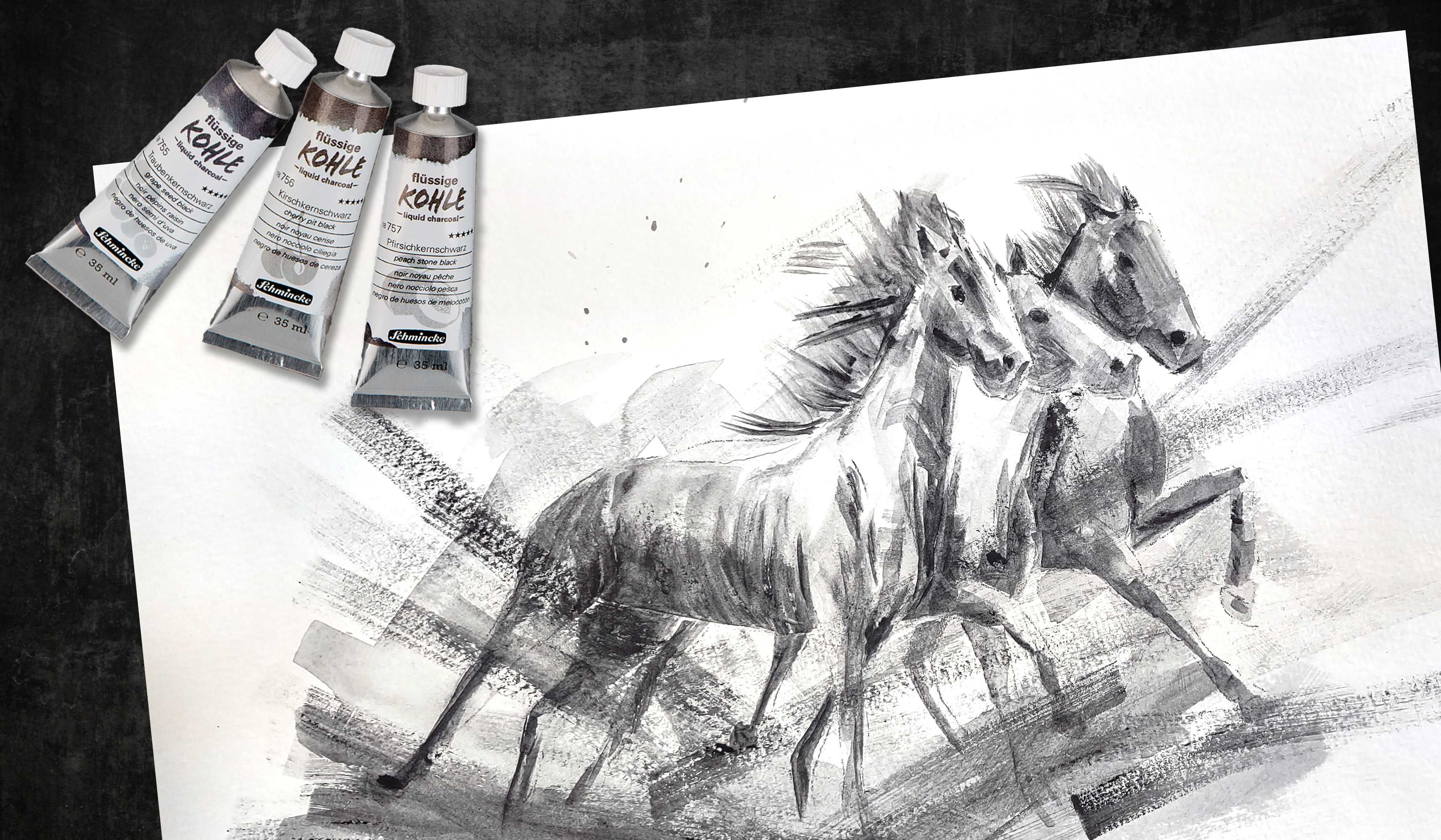

How to protect Charcoal drawings?
There are different ways to protect a charcoal drawing as the Charcoal can be susceptible to being smudged.
A Fixative suitable for Charcoal drawing can be used either throughout the different stages of the drawing or at the end to offer some protection against smudging. The choice of how to protect a charcoal piece will depend on how much the drawing is handled.
- Putting into a frame with a mount/Matt to keep the surface away from the glass front
- Using a Fixative is important to apply light, thin, fine layers of fixative spray to prevent a heavy application sinking into the paper surface.
Workable Fixatives are designed to be able to be worked over so once dried you can go over the surface again. It's important to test using a fixative before you apply them to your artwork as you can find that it may dull and flatten the tonal values.
Before applying the fixative to your artwork, Gently tap the back of the surface to remove any loose charcoal and make sure the room well-ventilated. Then as you apply the fixative, allow each layer to fully dry before applying the next layer. It's not recommended to use a Hairspray as a fixative as it is not designed for this practice and will yellow over time.
Alternatively, if you do not want to use a fixative or are not using a fixative on the final layer, you can protect the surface with a sheet of Glassine or Crystal paper. This is a translucent acid free paper that is placed on the surface of the drawing, clipped on the edges with paper with clips and will help protect the Charcoal from smudging.


Learn the basics with Becky Gouveneur...
Charcoal FAQs
-
Yes, you can this will enable the charcoal to become a wet medium and allow for interesting effects. A heavier weight paper maybe required if water is being used.
-
It is important to select a surface that has a little texture in order for the Charcoal to grip to the surface. Charcoal does not work effectively on Glossy or shiny surfaces. Cartridge, toned papers or drawing papers offer a good surface to work on with charcoal, but you can also use watercolour papers and even canvas (as long as it is not too shiny- a primer may be required to ensure the charcoal adheres to the surface.)

